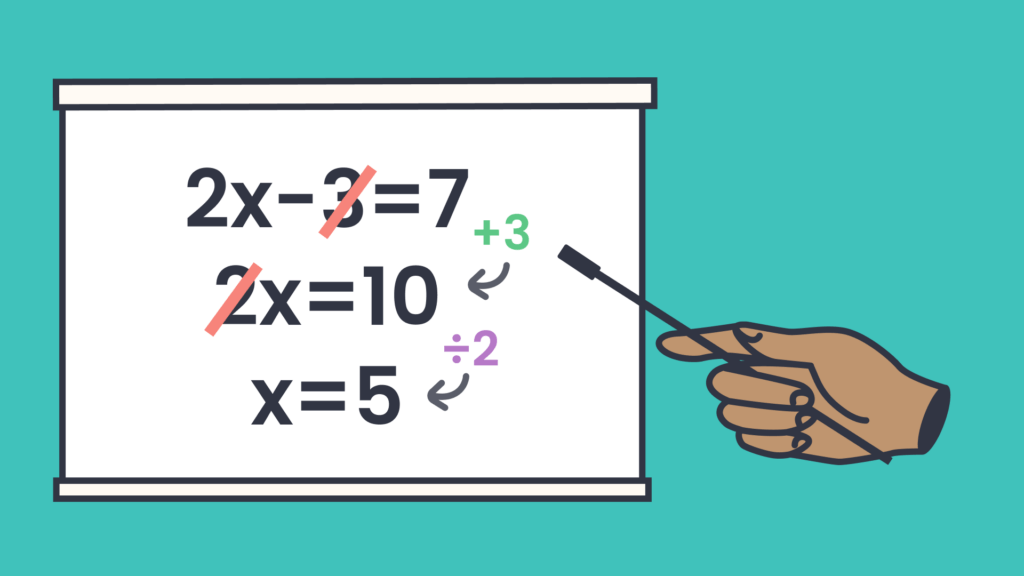Cognitive Load Theory explained for teachers in the classroom
In this guide
- Cognitive Load Theory defined
- Schema and Cognitive Load
- What is a Schema and why is it important to learning?
- Relevance in the classroom
- Applying CLT in the classroom
- Current trends in Cognitive Load Theory
- Conclusion
When I was teaching art students new concepts, it became evident that some students could grasp concepts much more quickly than others. I knew, however, that contrary to popular belief, this did not necessarily demonstrate deficiency but rather served as a confirmation that each student learned in their own unique way.
I’m sure, as an educator, you likely noticed that each student learns differently and have asked yourself how you can make learning easier for all of your students, and I may have the answer you’ve been searching for—Cognitive Load Theory (CLT). Incorporating practices associated with CLT into your classroom will help you to understand how each student processes information and how you can align your teaching to tap into the unique way that your students learn.
In this article, we will dive deep into CLT, explore current trends, examine the role of schemas, and discuss strategies that work and how to implement them in your classroom (Clark, Nguyen, and Sweller, 2006).
Cognitive Load Theory defined
In the late 1980s, John Sweller developed CLT based on the theory that working memory capacity is limited. When that capacity is exceeded, it creates a barrier, making learning much more difficult.
A cognitive load refers to the mental effort required to process information, perform tasks, or solve problems to learn a concept. This is the demand placed on one’s working memory. As an educator, you play a crucial role in managing this demand to optimize learning.
CLT is divided into three categories focused on load type and their effects on learning. Each load type requires specific strategies for effectively managing the demand. CLT load type categories include intrinsic, extraneous, and germane. Let’s examine each of these and look at a couple of scenarios to help explain what each might look like in the classroom.
According to the Education and Training Foundation, “Cognitive Load Theory (CLT) helps us understand how the human brain processes and retains new information. It emphasizes the importance of managing cognitive load to improve learning outcomes” (Education and Training Foundation 2023). This theory provides a promising framework for educators, offering strategies to enhance learning for all students.
Category 1: Intrinsic Load
Intrinsic Load refers to the inherent difficulty and complexity of the concept being learned, which is influenced by both the nature of the information and how the learners process it. This is significant because concepts with a high intrinsic load may be more challenging for some students to learn. Understanding this can help educators incorporate scaffolding into their instruction to make the content more manageable for students (U.S. Soccer 2024).
Intrinsic Load Scenario 1:
Students in a 5th-grade class are learning about fractions. Understanding that a fraction represents part of a whole and that different fractions can mean the same thing (e.g., 1/2=2/4), adding, subtracting, and finding denominators are all parts of this complex process.
Intrinsic Load Scenario 2:
In high school biology, students learn about photosynthesis. Again, in this scenario, various components make up this process including chlorophyll, light energy, carbon dioxide, and multiple interactions to produce glucose and oxygen. The detailed biochemical process is complex.
Category 2: Extraneous Load
An extraneous load is not directly related to the learning material, rather, this refers to the effort one has to exert to manage distractions, poorly designed learning materials or teaching methods, and anything else that works against learning. This is significant because it is a barrier to learning efficiently and removing extraneous load will improve the learning process.
Extrinsic Load Scenario 1:
A science teacher creates a worksheet for students and instead of breaking the lab experiment into manageable steps and chunking information, they provide a long paragraph describing what students need to do (Paas, Renkl, and Sweller, 2003).
Extrinsic Load Scenario 2:
A social studies teacher creates a PowerPoint presentation that is poorly designed, with excessive text and random unrelated animations. This distracts students from focusing on key concepts and makes the information in the presentation harder to learn. Reducing extraneous load requires “presenting material in a way that avoids overloading working memory” (Mayer and Moreno, 2003, 50).
Category 3: Germane Load
A germane load refers to the amount of effort that is necessary to process new information and build new learning, and knowledge. This processing is referred to as a schema. A schema is the brain’s framework for organizing new information into building blocks for understanding.
In the next section we will explore more in depth what a schema is and why its significance. Germane load is important to understand because it is a barrier to learning efficiently, and removing extraneous load will improve the learning process.
Germane Load Scenario 1:
While students are working on a complex algebra problem, the teacher displays a worked problem as an example on the board for students to reference. This allows students to have a visual frame of reference that they can internalize, enhancing their learning. According to Clark, Nguyen, and Sweller (2006), “Worked examples help learners build schemas more effectively by focusing on the problem-solving process” (73).
Germane Load Scenario 2:
In a history course, students in a group project are encouraged to actively engage with the materials, discuss what they discover, and demonstrate a deeper understanding of the Industrial Revolution and its impact today. Connecting the past to the present is a way to direct the learning experience toward meaningful learning activities that promote schema development (Van Merriënboer and Sweller, 2005).
Understanding each type of load is crucial for educators. It helps them comprehend the nuanced and various factors affecting learning, both internally and externally. By understanding cognitive loads and the strategies that impact them, teachers can create learning experiences that balance intrinsic, extrinsic, and germane loads to create optimized learning for all their students.
This knowledge empowers teachers to tailor instruction to manage different loads, reducing the risk of students becoming overwhelmed or distracted. Ultimately, this understanding enhances student learning outcomes by improving learning efficiency, creating meaningful learning, and reducing unnecessary cognitive efforts.
Schema and Cognitive Load

Schemas play a crucial role in reducing cognitive load. They are the brain’s framework for organizing new information into building blocks for understanding. By using teaching strategies that facilitate students’ acquisition of additional schemas, you can help them process complex information more effectively.
Some strategies for this include creating schemas by providing worked examples to students. When an educator provides step-by-step solutions, students gain insight into the underlying patterns and principles of the concepts they are trying to learn. Additionally, schema development increases through the use of active learning.
For example, when students create a timeline of Art History movements, they have to connect individual facts to the larger and broader historical context, and such activities can form a robust schema (Stern, 2019).
What is a Schema and why is it important to learning?
Much like building a library of books, developing schemas starts with creating spaces to hold the learning in our minds. In a library, one might begin by making the bookshelves to hold the books. Similarly, when we gain knowledge, we have somewhere to store that knowledge. In a library, if the books are just piled up everywhere, it is very hard to pinpoint where to find specific information.
In our brains, as we learn, we begin by understanding the basic information and then see how that information is related to other pieces of information. These connected pieces of information are then put together like constructing bookshelves, and these frameworks organize and store the information we have learned. These shelves are the schema.
Once we have the bookshelves (framework) we can begin filling them with books (new information). This process is called Assimilation. It’s like adding a book to a labeled and organized shelf in the library and much like a well-organized bookshelf, these schemas help you to retrieve information and knowledge quickly and efficiently.
When you learn something that doesn’t quite fit into an established schema, you may need to reorganize and expand your shelves. For example, if you were to learn a new math concept that changes your previous understanding, your existing schema would need to change to accommodate the new knowledge (Dixon, 2017).
Relevance in the classroom
As educators, we facilitate students creating and organizing their mental libraries. This involves:
1. Teaching Concept Introduction: This is the phase where basic concepts are introduced, and initial schema are developed. (bookshelves).
2. Reteaching, Practice and Reinforcement: In this phase practice is used to reinforce concepts and expand schemas. New information is integrated into former schemas and adjustments to knowledge occur (adding books).
3. Challenge Misconceptions: This last phase is where old information may conflict with new information and the mental library needs to be reorganized (reorganizing the shelves).
Applying CLT in the classroom
Using CLT in your classroom is a strategic way to manage how much effort your students exert to efficiently learn the content you are teaching. Here are some practical examples you can use to facilitate an optimum learning experience:
Regularly use worked examples:

When you introduce new concepts to students, provide a worked example that breaks the learning into manageable steps. These examples can be very helpful to students and reduce cognitive load because it allows the student to focus on understanding rather than being overwhelmed by the process.
For example, in a math class a teacher could solve a problem step-by-step on the board and explain each step to the class. To reiterate the process, pair students and provide similar problems. Allowing students to work collaboratively encourages peer learning and significantly reduces cognitive load (Sweller, et al., 2011).
Simplify and organize instructions for optimization:
When I first began as an art teacher, I was teaching a unit on oil painting to my high school students. Initially, I completed a guided demonstration in one go, which left many of my students overwhelmed and confused. I quickly realized my mistake, and to rectify it, I broke the demonstration down into smaller mini-lessons with more manageable parts.
I provided an instruction sheet with step-by-step instructions to each student so they could follow along or move ahead at a faster pace if they understood the concepts. This allowed for students to set their own pace in their learning. Instead of diving right into the demonstration, I started by showing students how to analyze a still life in one mini-lesson and then break it down into the basic shapes that made up the forms in the next mini-lesson before moving forward to the last steps of refining their compositions into finished pieces.
The teacher demonstration piece was placed on the whiteboard as a worked example that students could refer back to as they completed their compositions. I revised this lesson to start with the simple steps first and then build up gradually and incrementally into more complex art techniques. By breaking this lesson into manageable chunks and providing clear and easy-to-follow step-by-step instructions, I reduced the intrinsic load and facilitated students processing the information more efficiently.
Create active learning experiences:
Increase germane load in a positive way by incorporating hands-on learning and group activities into a comprehensive and multi-layered lesson. For example, incorporating active learning strategies in a theater class can significantly improve students’ understanding and keep students engaged.
Theater teachers can create a group project where students develop and perform a short play. Applying what students have learned about stage direction, dramatic techniques, and character development facilitates students thinking critically about the multiple components required to create a play, like developing a storyline, scriptwriting, and rehearsal.
This immersive experience reinforces germane load by focusing mental resources in a meaningful way and promoting a deep understanding of theatrical processes (WeTheParents, 2024).
Utilize multimedia in a thoughtful way:
It is important to engage students by using a variety of multimedia to support different modalities of learning. Video, images, audio, and text can all enhance learning when used thoughtfully.
For example, in a history class, a teacher might align the multimedia to the learning objectives, assigning a different modality to each. Keeping in mind the goal of reducing the cognitive load, it is always a good idea to utilize short-form films or even just clips to emphasize a concept and keep students engaged.
If showing a film about Rosa Parks, using clips from a film may help students better grasp the context and significance of the event without feeling overwhelmed by the excessive details provided in a full-length film (Sweller, Ayres, and Kalyuga, 2011). Using films in this way supports the germane load.
Designing effective formative assessments:
Formative assessments are well suited to managing cognitive load. These low-stakes assessments are easy to incorporate into the lesson and provide immediate feedback that teachers can use to inform their instruction. Formative assessments also help students reflect on their learning in the moment. In my classroom, I often used tickets out the door, Think, Pair, Share, and Critique to assess understanding while keeping extrinsic load to a minimum.
Current trends in Cognitive Load Theory
The field of education is ever-changing. As technology advances, it shapes and reshapes how we teach and understand learning. Current trends in CLT also reflect these advancements. Below we will look at four trends that are significantly influencing how we approach cognitive load in the classroom today. Each of these impacts how information is both presented and processed.
Designing learning with personalized learning in mind:
Tailoring learning to create a personalized learning experience not only meets the individual needs of all students but can increase engagement and promote schema development.
According to Fulton County Schools, “flexible pacing and varied strategies that consider the interests of the students” are key to creating this framework. Additionally, giving students choice and voice, choice in demonstration of mastery, utilizing adaptive software, and many other personalized strategies align to CLT.
Intrinsic Load:
Personalized learning is well-suited to tailoring task complexity to align to a learner’s level, meeting students where they are, and ensuring that the intrinsic load is appropriate. When teachers design learning that aligns with a student’s level of proficiency, they manage the inherent difficulty of the material being learned.
Extrinsic Load:
A well-designed personalized learning platform will often incorporate adaptive learning that adjusts with the proficiency of the learner and removes irrelevant information, zeroing in on essential learning content. Reducing distractions allows students to focus on the core learning objective.
Germane Load:
When learning is aligned with students’ interests and personalized to engage their strengths, the learning becomes deeper, promoting schema development (Kirschner, Sweller, and Clark, 2006).
Gamification to boost engagement:

When we refer to gamification in the context of learning, it means utilizing game-like components in non-game contexts as an educational strategy to increase learning motivation and learner engagement.
For example, lessons may incorporate gaming elements such as badges, leaderboards, point systems, simulations, challenges, strategy development, and competition to make learning interactive and fun.
Play is key in gamification. It is not just a break from the task of learning; it is a critical component of learning. It is through play that the first learning occurs. Young children develop cognitive, social, emotional, and self-worth skills from the earliest play sessions. All of these core skills are necessary as foundational for new experiences and understandings to be built.
According to the National Institute for Play, “Play is critical to cognitive development, particularly in the way it helps children understand the world and develop social and problem-solving skills” (National Institute for Play, 2023).
Intrinsic Load:
Gamification in the learning environment reduces the inherent difficulty of the material being learned by breaking down complex tasks into manageable challenges and allowing learners to practice skills over and over.
For example, pilots are taught the complex task of flying a plane using simulation, a form of play, to practice flying in a safe learning environment, learn from their mistakes, and avoid unwanted consequences.
Extrinsic Load:
Any form of play naturally reduces extrinsic load because it makes learning engaging and fun. It also reduces distractions, so students focus on learning itself.
Germane Load:
Gamification increases germane load as students strategize, problem-solve, engage in critical thinking, and apply knowledge hands-on. Furthermore, gamifying learning facilitates building and automating schemas, ultimately making learning more efficient.
Technology-rich learning environments:
Digital learning environments are very common today and incorporate online tools, learning management systems, and software to facilitate education at a distance. This has expanded how teachers engage with students, especially in virtual classrooms and through interactive simulations.
Intrinsic Load:
Digital learning environments are perfect for creating chunked learning. Many platforms are designed to accommodate learning in manageable segments known as modules. Utilizing modules as a framework for learning reduces the intrinsic load by creating an organized structure for breaking down complex topics into smaller, easily consumed learning segments.
Extrinsic Load:
A well-designed learning platform reduces extraneous load by providing a clear and intuitive way for learners to navigate the digital learning environment. This frees up the cognitive load from focusing on the struggle of using a poorly designed interface and allows the learner to focus on the learning content instead (De Jong, 2010).
Germane Load:
Digital platforms can also enhance germane load when they provide interactive elements that engage critical thinking. Additionally, these learning hubs become a rich resource that facilitates students building and automating schemas as they practice and apply learning.
Multimodal learning:
Multimodal learning describes the use of multiple modes of information distribution in the learning process. For example, the use of video, audio, text, and images in a lesson. Studies have shown that the use of multimodal learning can improve both comprehension and retention because it distributes the cognitive load over various sensory channels, optimizing the way information is being processed and retained by learners (Mayer, Richard E., and Roxana Moreno, 2003).
For example, if you want to learn a new language, you will learn it more efficiently if it is taught by combining auditory learning through listening to the spoken words, visual imagery by seeing the words written and related images, and hands-on activities like writing and speaking the words. This comprehensive multimodal approach has been shown to deepen comprehension and retention (Clark, Nguyen, and Sweller, 2006).
Intrinsic Load:
When complex learning is presented through a variety of channels it makes it much easier for learners to grasp. Each presentation of the information through different channels acts as both practice and taps into a different cognitive load, more evenly distributing the said load.
Extrinsic Load:
A well-designed multimodal learning approach will reduce the extraneous load because each mode will work in balance to complement the other, minimizing the learner feeling overwhelmed with an overabundance of extraneous information. Clear and organized information can reduce unnecessary distractions (Mayer and Moreno, 2003).
Germane Load:
Multimodal learning enhances germane load by facilitating students’ building and automating schema efficiently. Using various channels reinforces learning in different ways and engaging multiple senses deepens learning (Clark, Nguyen, and Sweller, 2006).
Conclusion
Cognitive Load Theory is a valuable framework for gaining insight into how your students process information and learn. Understanding the principles of cognitive loads and how to manage them will facilitate your learners’ learning more efficiently and improve learning outcomes.
Teaching is truly both an art and a science. With this understanding of CLT, you can utilize this framework in your classroom but also experiment and add your creative personal touch to the learning experiences you design for your students to create meaningful and engaged learning that works best for your students.
Sources
- Cash, Justin. July 1, 2024. The Drama Teacher. “Applying Cognitive Load Theory to Drama Education: 8 Helpful Examples Plus Infographic.” Accessed August 19, 2024. https://thedramateacher.com/cognitive-load-theory-in-drama-education/.
- Clark, Ruth C., Frank Nguyen, and John Sweller. 2006. Efficiency in Learning: Evidence-Based Guidelines to Manage Cognitive Load. San Francisco: Pfeiffer.
- De Jong, Ton. 2010. “Cognitive Load Theory, Educational Research, and Instructional Design: Some Food for Thought.” Instructional Science 38, no. 2: 105-134.
- Dixon, Travis. “Schema Theory: A Summary.” Thematic Education. November 29, 2017. Accessed July 10, 2024. https://www.themantic-education.com/ibpsych/2017/11/29/schema-theory-a-summary/#:~:text=They’re%20also%20called%20%E2%80%9Ccognitive,are%20like%20the%20individual%20files.
- Education and Training Foundation. “The Importance of Cognitive Load Theory.” SET. Accessed July 10, 2024. https://set.et-foundation.co.uk/resources/the-importance-of-cognitive-load-theory#:~:text=Cognitive%20Load%20Theory%20(CLT)%20%2D,learning%20(Sweller%2C%201988).
- Kirschner, Paul A., John Sweller, and Richard E. Clark. 2006. “Why Minimal Guidance During Instruction Does Not Work: An Analysis of the Failure of Constructivist, Discovery, Problem-Based, Experiential, and Inquiry-Based Teaching.” Educational Psychologist 41, no. 2: 75-86.
- Mayer, Richard E., and Roxana Moreno. 2003. “Nine Ways to Reduce Cognitive Load in Multimedia Learning.” Educational Psychologist 38, no. 1: 43-52.
- National Institute for Play. 2023. “The Importance of Play in Child Development.” Accessed July 10, 2024. https://www.nifplay.org/importance-of-play-in-child-development/.
- Paas, Fred, Alexander Renkl, and John Sweller. 2003. “Cognitive Load Theory and Instructional Design: Recent Developments.” Educational Psychologist 38, no 1:1-4.
- Alyssa Buccella. December 1, 2023. Great Minds. ”What Are Schemas, And How Can They Help Your Students Learn? Accessed August 19, 2024. https://greatminds.org/aha-blog/what-are-schemas-and-how-can-they-help-your-students-learn.
- Sweller, John, Paul Ayres, and Slava Kalyuga. 2011. Cognitive Load Theory. New York: Springer.
- U.S. Soccer. “Making Learning Happen Part 2B: Optimizing Intrinsic Load Through Scaffolding.” U.S. Soccer Learning Center. Accessed July 10, 2024. https://www.learning.ussoccer.com/articles/coaching/article/optimizing-intrisic-load-through-scaffolding.
- Van Merriënfoer, Jeroen J. G., and John Sweller. 2005. “Cognitive Load Theory and Complex Learning: Recent Developments and Future Directions.” Educational Psychology Review 17, no. 2: 147-177.

NaJuana Lee
briefcase iconSr Director of Learning and Development | Curriculum Design Expert
Dr. NaJuana P. Lee has a unique blend of expertise combining over 10 years of experience in both secondary and post-secondary education and 15+ years as a curriculum development expert. Her contributions have empowered teachers worldwide with culturally competent, innovative and engaging curriculum and teaching materials designed to facilitate all students succeeding.
Other posts
Want more content like this?
Subscribe for blog updates, monthly video releases, trending topics, and exclusive content delivered straight to your inbox.














